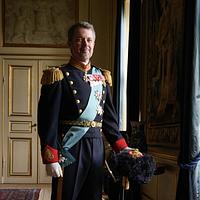Honorable Lord Mayor, Mayors, distinguished guests from UNESCO, UIA, and partners
I am delighted that Copenhagen has been appointed “World Capital of Architecture” by UNESCO and the International Union of Architects. As its Patron it is my great pleasure to kick-off an exciting year with numerous architectural events ahead of us, not least the World Congress of Architects in July.
Today we are gathered in the magnificent Copenhagen City Hall, which so eloquently illustrates to all of us why architectural quality is important: Expressing its epoch in great spaces and delicate handcrafted details, the architecture sprinkles us all with a wellbeing that inspires us, opens our minds, and brings us together through an aesthetic experience. Architecture creates community.
Designed and build more than a century ago by the architect Martin Nyrop – The City Hall testifies that architectural quality is not a new phenomenon in Denmark.
In fact, we have a long and proud history of architecture - including urban planning, landscape, building, and furniture design.
In 1754 The Royal Danish Academy of Painting, Sculpture and Architecture was founded in Copenhagen by King Frederik The 5th, who wanted to make Denmark capable of educating its own architects and artists on a highly elevated level.
In the following Florissant decades new urban plans for Copenhagen were laid out and erected. The most prominent plan being Fredriksstaden designed by the Danish architect Nicolai Eigtwed who, designing The Royal Palaces and the Royal Plaza, created a European masterpiece in the Baroque style.
Since then, we have insisted, that striving for artistic quality and beauty should always be mandatory when developing our common physical surroundings: only by considering architecture as an artform, can we create useful, dignified, and long-lasting surroundings for our individual and common life.
I believe this is one of the reasons why good architecture has become an important part of the Danish identity: We are all surrounded by it – it is our architecture, and it reflects who we are as a society.
This understanding and approach has been important for the development of a specific architecture culture, that is about a human centered functionality, simplicity, social cohesion, and appealing aesthetic qualities.
The cities, the buildings and the designs coming from this culture, which in many ways is shared in the Nordic countries, has, and still does create international attention and fame.
In fact, architecture is a Danish export stronghold with Danish architects designing urban life, affordable housing, and cultural beacons in cities around the globe.
Just think of the iconic Sydney Opera House by Jørn Utzon, or the traffic jammed Time Square in New York City, made into a public pedestrian plaza by Jan Gehl Architects.
Today we receive the honorable torch of The World Capital of Architecture. As we know, all honors come with an obligation. We stand on the shoulders of past generations and an architectural heritage that we appreciate and protect.
We know that we are obliged to further develop our capital for future generations where there is a fine balance between new and old, between being prosperous and inclusive, between high culture and that, which is important for all of us – our everyday life and sense of belonging – the feeling of being home. Copenhagen is indeed a sustainable, livable city.
We now look into the future, where solving some of the greatest challenges of our time is at the center of our ambition for the future development of our Capital.
Danish architects, engineers, and designers, together with the public authorities, are working tirelessly to innovate new urban designs and architecture, that contributes radically to eradicate carbon emission, to raise biodiversity and to secure social inclusivity and cohesion.
Take a walk, take a bike ride, or take the Metro, and see for yourself how Copenhagen is becoming a showcase of how architecture can change the world. Experience the public ski slope on top of the incineration plant, The Resource Row of housing blocks created by recycled building facades or the grain Silo converted into apartments and leisure.
The most dedicated Danish and foreign architects are competing, making Copenhagen an abundant laboratory of new solutions. A true World Capital of Architecture.
The UIA World Congress in Copenhagen in July, aligns with the framework of the UN Global Goals “Leave no one behind”.
Thereby inspiring architects around the world to be brave, bold, and creative in showing how every one of us can be part of a sustainable future where Planet Earth is rightfully and respectfully cherished for being what it should be – our common home, our common future.
I am full of confidence that Copenhagen will be an inspiring, worthy, and welcoming Capital for this important ambition and event.
I wish you a successful World Capital of Architecture!
Thank you.
